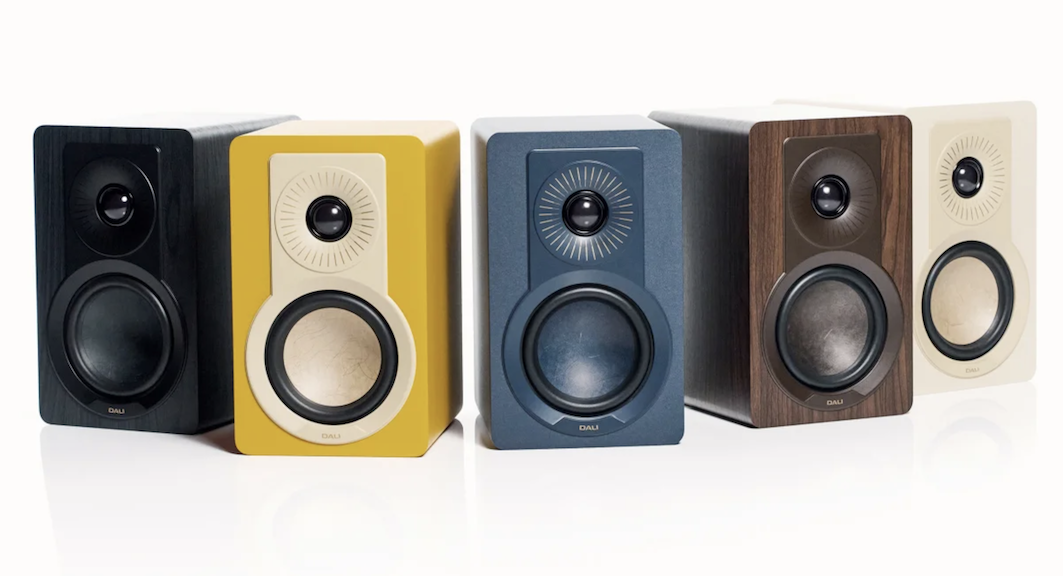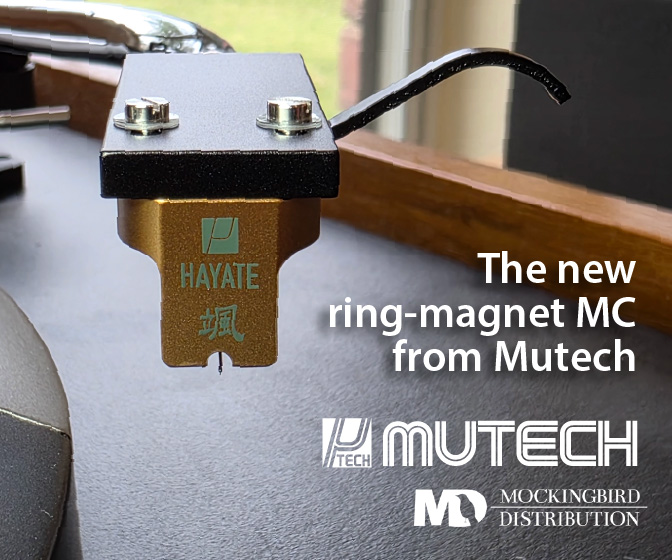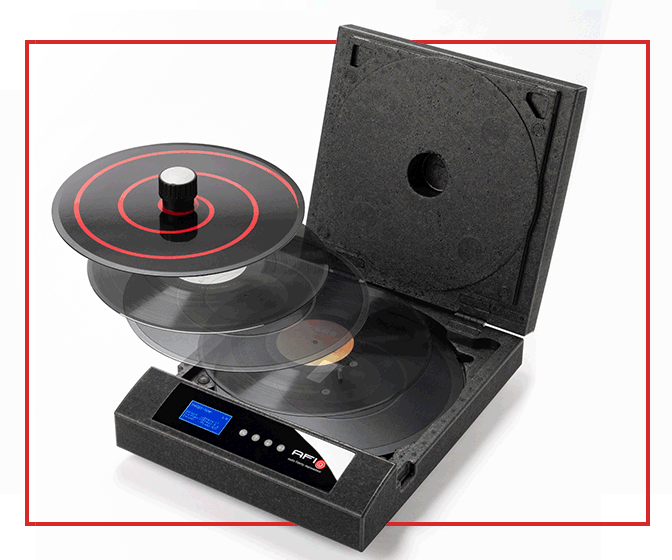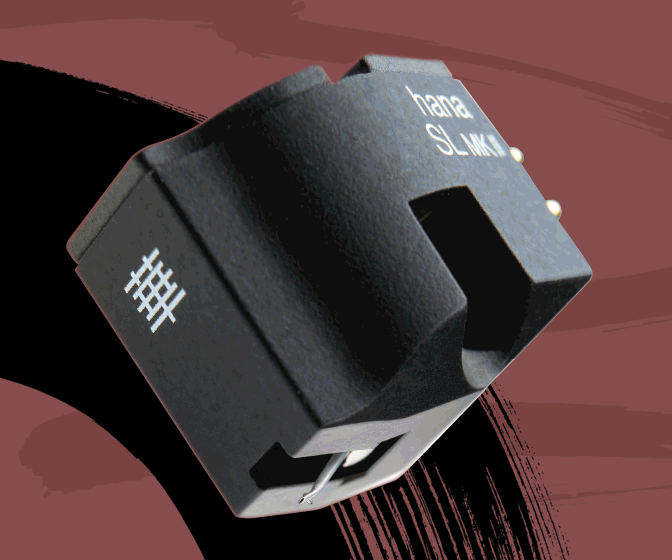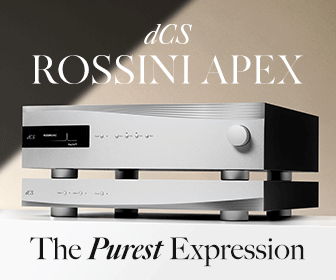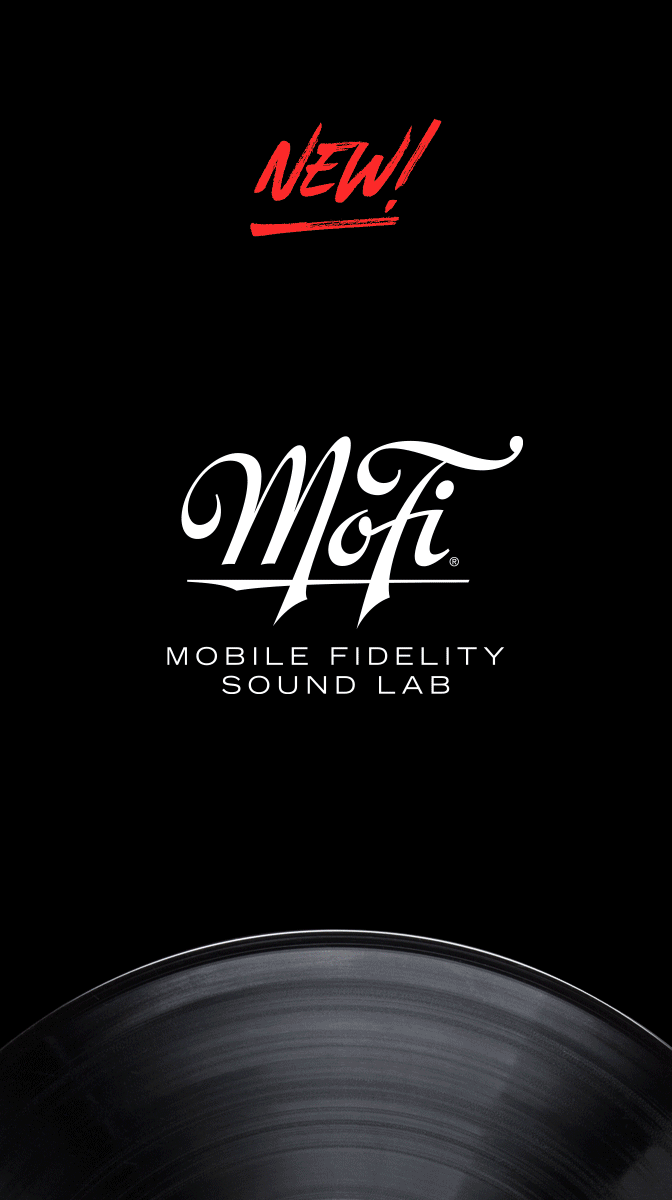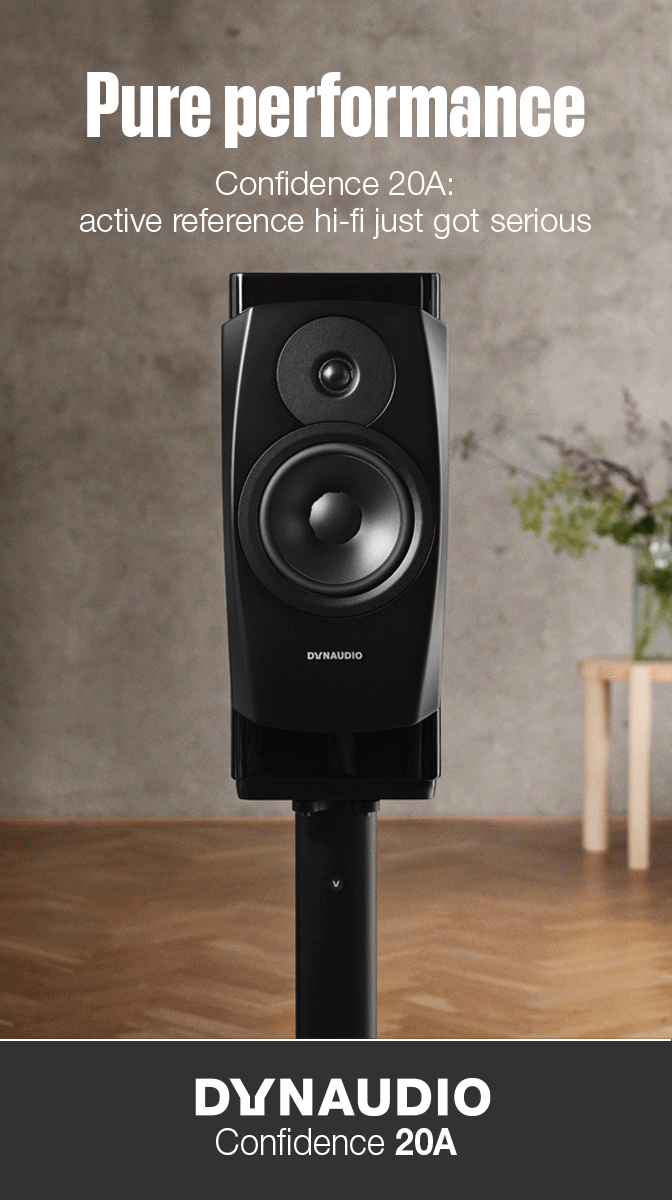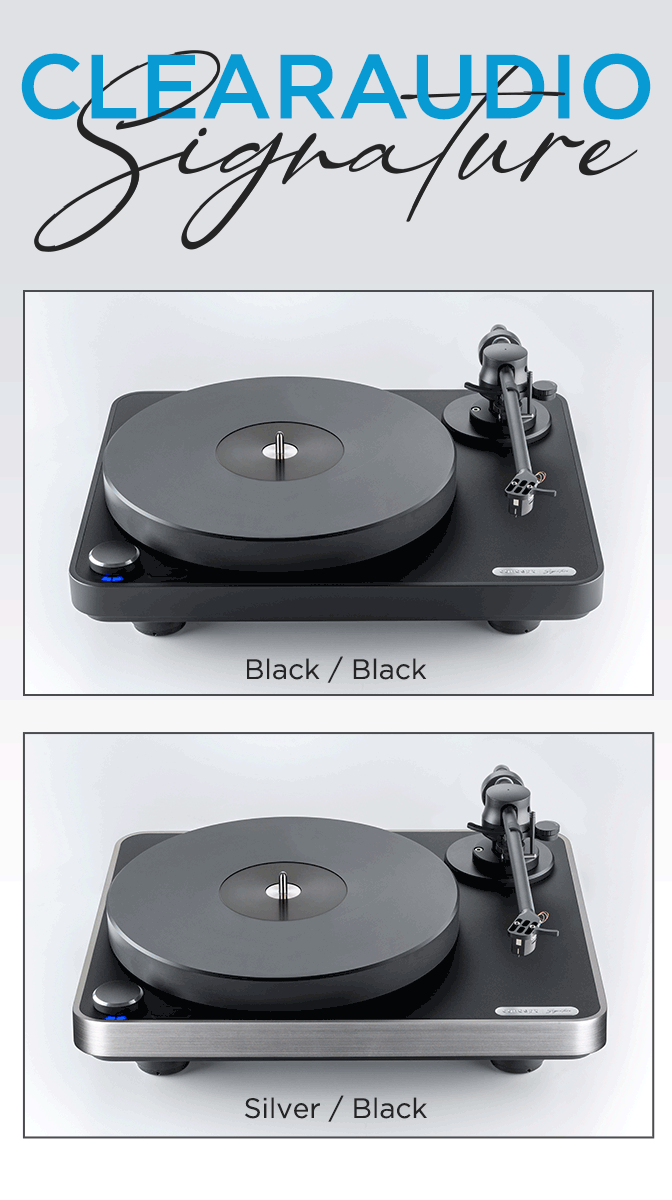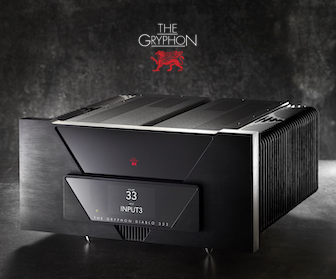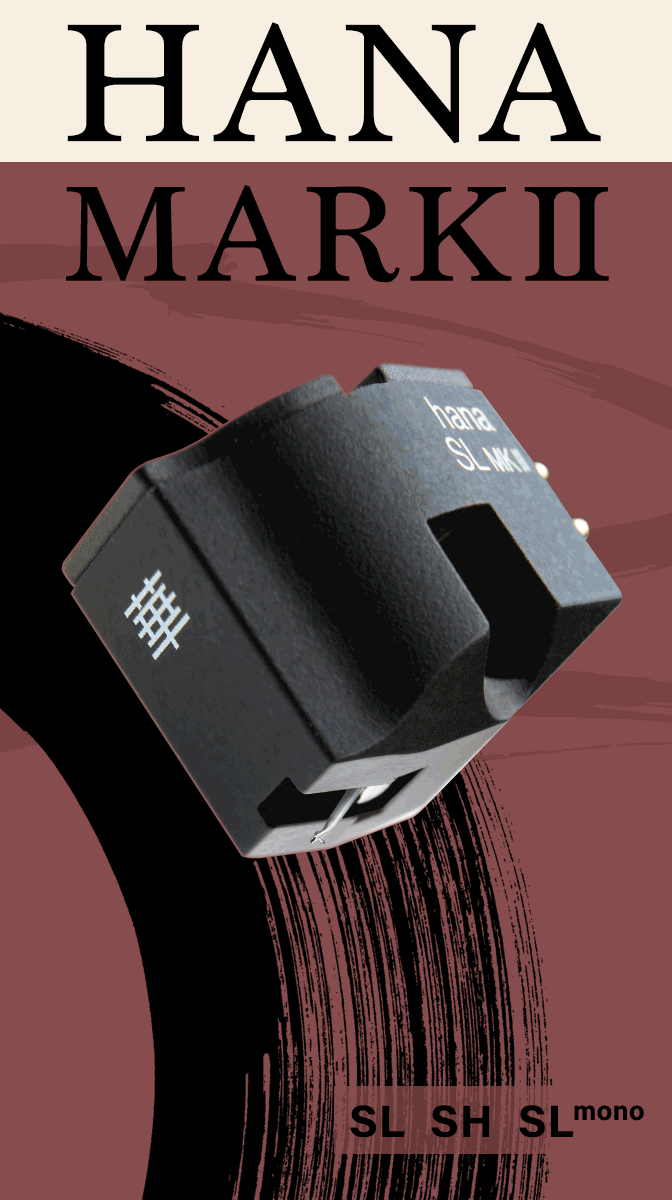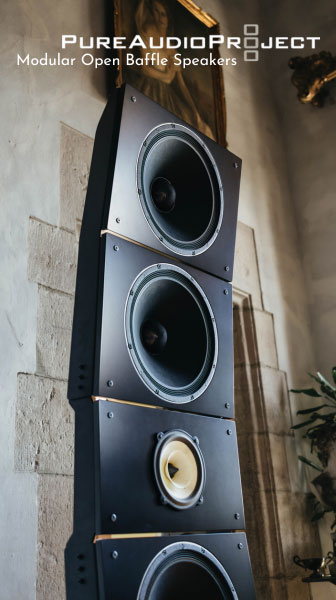DALI "Kupid" 2-Way Compact (Passive) Loudspeaker
A Real Contender for The Loudspeaker Bargain of the Century
Well, that’s sure an unusual name for a small, dare I say it, “cute,” loudspeaker.
Cupid is the Roman mythic counterpart to the (pre-existing) Greek minor mythical figure “Eros.” (“Eros” means “Longing,” and it is the root of our word “erotic.”)
In art, Eros was represented as a winged youth. In mythology, Eros was the offspring of Venus, the goddess of love; and Mars, the god of war.
During the time between the death of Alexander the Great and the rise of the Roman empire, Greek representations of Eros began to include his bow and arrow. According to myth and legend, whoever was struck by Eros’s arrow would experience extremes of passionate desire.
All of that carried over to the Roman version, “Cupido” being the Latin for “passionate desire.” I think that, as time went on (up to the present), representations of Cupid moved away from a “youth,” that is, a male (and, occasionally malevolent or, at least mischievous) teenager; and toward a Cherub, which is a winged-infant figure, the origins of which go all the way back to ancient Jewish speculations on the “Angelic Hierarchy.”
From the Renaissance on, Cupid was almost always portrayed as a chubby winged-infant figure. I had suspected that our word “Chubby” might be descended from the word “Cherub;” but, it seems not. Quoth Wiktionary: “Cognate with dialectal Swedish kubbug (“fat, plump, chubby”).”
A good example is Lucas Cranach the Elder’s (1472 – 1553) – Venus with Cupid [,] Stealing Honey.
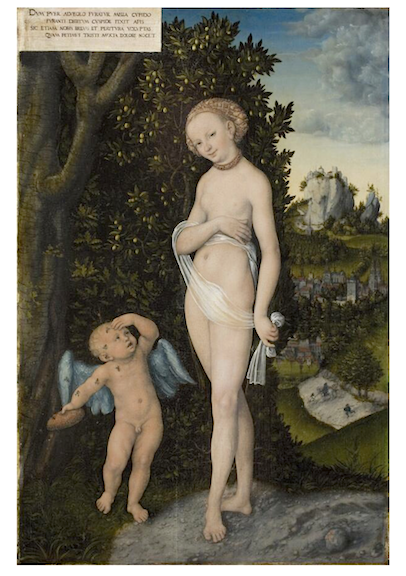 “Hey, Mom! Can’t you do anything about these bees?”
“Hey, Mom! Can’t you do anything about these bees?”
DALI’s Kupid is a small, relatively affordable ($750/pair) two-way passive loudspeaker, with a 4.5-inch paper-and-wood-fiber woofer and a one-inch soft-dome tweeter, in a cabinet measuring 9.3” H x 5.5” W x 7.7” D. Each loudspeaker weighs 12.8 pounds. The Kupid is ported at the rear. The crossover frequency is stated as 2,100Hz.
I was a bit surprised to see DALI release such a small and affordable loudspeaker, in that its recent efforts seemed to have been concentrated in the stratospheric (or, ionospheric) price heights. Perhaps someone thought it was time to balance things out. And, small it is. The Kupid, at 5.5 inches wide, is narrower than a US dollar bill is long (6.14 inches).
The Fourth-Quarter 2025 advent of the Kupid reminded me of a story about UK Prime Minister Harold Macmillan (who served 1957 – 1963). One day, Macmillan was asked what the most troubling problem he faced as Prime Minister was.
“Events, dear boy, events,” was his reply. So, we cannot ignore “events” any more than Macmillan could. The current turmoil in US political and economic affairs doubtless has made many people rein in their discretionary spending.
And then of course, there are the Tariffs.
I assume that the cost savings of manufacturing the Kupids in China are greater than the burden of the tariffs. It’s not as though DALI is going to drop everything and set up a factory in Indiana (or in any other US state the name of which ends with a vowel). And, in any event, such a factory would almost certainly have to rely upon some foreign-sourced subcomponents; anything from drivers to resistors and capacitors, coils, and ports.
The Kupids arrived in one sturdy box with satisfactory packing protection. DALI thoughtfully provided self-adhesive rubber bumpers or feet. Magnetic grilles were also provided. As per my norm, I ignored them.
 That said, the grille frames of the painted-color options (as shown below), are covered in an attractive neutral beige-ish fabric. I think they lend a “home-y” vibe, as distinct from a “studio” or a “techno” vibe. (The review samples, in Black Ash, had black grille fabric.) The Kupids came with brackets to hang them on a wall. I ignored those, too.
That said, the grille frames of the painted-color options (as shown below), are covered in an attractive neutral beige-ish fabric. I think they lend a “home-y” vibe, as distinct from a “studio” or a “techno” vibe. (The review samples, in Black Ash, had black grille fabric.) The Kupids came with brackets to hang them on a wall. I ignored those, too.
 One distinguishing feature of the Kupids is, as shown at the very top, above, that the cabinets are available, not only in fairly convincing Dark Walnut or Black Ash vinyl wraps; but also, paint finishes of Golden Yellow (with, for the lack of a better term, an ivory-colored escutcheon plate, or driver surround or bezel); Caramel White (ditto); and Chilly Blue (blue escutcheon). The Dark Walnut speaker has a brown escutcheon; the Black Ash speaker, a black escutcheon. The cabinets are made from MDF.
One distinguishing feature of the Kupids is, as shown at the very top, above, that the cabinets are available, not only in fairly convincing Dark Walnut or Black Ash vinyl wraps; but also, paint finishes of Golden Yellow (with, for the lack of a better term, an ivory-colored escutcheon plate, or driver surround or bezel); Caramel White (ditto); and Chilly Blue (blue escutcheon). The Dark Walnut speaker has a brown escutcheon; the Black Ash speaker, a black escutcheon. The cabinets are made from MDF.
Another interesting industrial-design touch is that the tweeter surround has decorative radial lines in a “sunburst” or “starburst” pattern. For the Chilly Blue color option, those lines are done with gold paint or ink. The same radial effect is on the rear panel’s port surround. The edges of the woodworking joints holding together the cabinet’s top, bottom, and sides are radiused or rounded over. I think that is a very nice touch.
One of my Shibbolethim (or, catchphrases) about loudspeaker design is that all loudspeaker designs are the product of a cascade of compromises—or, at least one compromise, in the rare case where the only thing being compromised on is Affordability.
Looking at the specifications, I don’t think anyone could claim to be surprised that, with a 4.5-inch woofer-mid in a toaster-sized cabinet, the Kupid’s claimed low-frequency extension is -3dB at 63Hz. Hand in hand, to get even that amount of extension, the claimed efficiency is 83dB.
To throw one data point out there, in 1989, Stereophile’s John Atkinson estimated the classic BBC (sealed-box) “Shoebox” monitor LS3/5a’s box tuning to be 93Hz, with an efficiency of 82dB.
Scrutinizing Stereophile’s Frequency-Response graph, to me it appears that the measured LS3/5a’s -3dB point was at about 71Hz. So, the Kupid’s -3dB point is 63Hz, while the LS3/5a’s -3dB point is circa 71Hz. I think that a lot of that is owing to the difference in the character of the bass response between a ported box and a sealed box.
BTW, my favorite way of envisioning such differences is to go to the Wikipedia page on “Piano Key Frequencies.” The piano key closest to 63Hz is B = 61.73Hz, while the piano key closest to 71Hz is D = 73.41Hz. When you can see that what we are really talking about is the difference between the notes B and D (B-C-C#-D)… I think that the added perspective is very valuable. No tears need to be shed, methinks.
One of my longstanding test tracks for bass extension is the first movement (“Selig sind”) of the Telarc Robert Shaw/Atlanta Symphony Brahms Ein deutsches Requiem. As shown in the Amadeus Pro II Spectrum below, the score calls for organ pedal notes at Low C = 32.7Hz. There’s also a Low F at 43.7Hz.
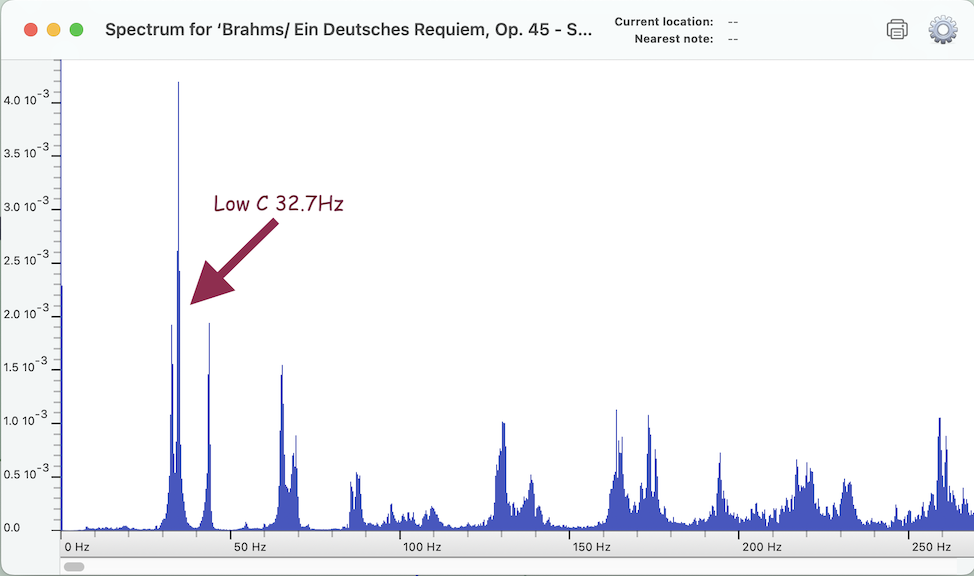 Faced with this challenge, the Kupids put on a pretty good show… but the very lowest organ-pedal notes were weak—if they were there at all. (The mid-bass was strong, though.) This is to be expected, in that the trade-off for a ported enclosure is the bass is strong at the port-tuning frequency, but below that frequency, the bass drops off more rapidly than is the case with a sealed-box enclosure.
Faced with this challenge, the Kupids put on a pretty good show… but the very lowest organ-pedal notes were weak—if they were there at all. (The mid-bass was strong, though.) This is to be expected, in that the trade-off for a ported enclosure is the bass is strong at the port-tuning frequency, but below that frequency, the bass drops off more rapidly than is the case with a sealed-box enclosure.
That is one of the major reasons that the Telephone-Booth-Sized behemoth studio-monitoring speakers of the past, such as Duntech’s Sovereign 2001, which was Bob Ludwig’s choice for many years, were sealed-box designs.
The Kupid’s low-frequency extension will either work for you, or not. If your pair of Kupids end up on your (physical) desktop, on either side of your computer’s monitor, I think that that would be a satisfactory marriage of expectations vs. actual performance. In that case, you might want to spring for a pair of wedge-shaped risers or supports for small desktop monitors, such as this one.
However, if your plan is to have the Kupids on loudspeaker stands, eight feet away from the listening position on your couch, in a medium-sized room… the Kupids’ obvious limitations either will be acceptable to you, or not.
By the way, the Kupids are specifically designed not to require “toe-ing in” toward the listening position. The owner’s manual flatly says, “Just don’t do it.” Well, they convey that by means of an overhead schematic drawing with a large red “X” in a checkbox beside it.
My usual yardstick for a “main” pair of loudspeakers is that I want the bass response to be flat down to at least 55Hz. Given the Logarithmic nature of sound frequencies, that usually requires a woofer two sizes larger than the Kupids’. By which I mean, at least six inches, and with a proportionally larger cabinet.
I chose 55Hz because it is the frequency of the “Strong Harmonic” of the pitch of the lowest key on a conventional piano with 88 keys: A = 27.5Hz.
That Fundamental is a “Weak Fundamental,” because even a 9-foot Concert Grand piano does not have a string length long enough to sound that Fundamental pitch at full strength. And, how could it? The wavelength of A = 27.5Hz is 41 feet. That was 41 feet. Just making sure you got it: 41 feet.
Fortunately for the piano business, our ear-brain system fills in, by locking onto the Strong (Octave) Harmonic A at 55Hz. Also, a loudspeaker that is flat at 55Hz is likely to be down by not more than -3dB at 41Hz.
41Hz is important, because it is the frequency of the lowest string on an electric bass guitar. Therefore, 41Hz is, for almost all intents and purposes, the lowest sound from a “melody” instrument (as distinct from a percussion instrument) in most of the music we listen to. (Pipe organs and orchestral string basses being two exceptions.) All that said, and perhaps because of their low efficiency (and perhaps also for being a 4-Ohm load), the Kupids have a very impressive low end—for loudspeakers of their cost and size.
I first broke the loudspeakers in with a home-made break-in track on repeat, with one loudspeaker out of phase, both speakers closely facing each other. My recipe for that break-in track is to take Pink Noise and boost the treble up by +2dB/oct. from 2600Hz on up, with an overlay of a 32Hz sine wave. I also used the Ayre/Cardas Glide Tone sine-wave sweep.
For critical listening, I used several of my Qobuz playlists. A playlist I have been having a lot of fun with, rediscovering music mostly from long ago, consists of pop and rock (and a few classical or art-song) Male Vocals.
QOBUZ: And Now, for the Gentlemen
Michael Feinstein: Isn’t It Romantic (1987)
Medley, “I Can Dream, Can’t I?” and “I’ll Be Seeing You”
“Isn’t It Romantic”
Harry Connick Jr.: We Are In Love (1990)
“A Nightingale Sang in Berkeley Square”
“Drifting”
Marvin Gaye: What’s Going On? (1971)
“Sad Tomorrows” (the demo version of “Flyin’ High (In the Friendly Sky)”)
“What’s Going On?” (the title track/single)
Van Morrison: Astral Weeks (1968)
“Astral Weeks” (the title track)
“The Way Young Lovers Do”
Olaf Bär: Dichterliebe (A Poet’s Love) Heine and Schumann (1986)
No. 13, “Ich hab’ im Traum geweinet” (“I wept in my dream”) (Heine No. 55)
No. 1, “Im wunderschönen Monat Mai”
Franco Vassallo: Arcano: Songs of Francesco Paolo Tosti (2021)
“Ideale”
“Good-Bye!”
Jesse Colin Young: Light Shine (1974)
“California Child”
“Grey Day”
Gordon Lightfoot: Cold on the Shoulder (1975)
“Bells of the Evening”
“Now and Then”
Mickey Newbury: Lulled by the Moonlight (1996)
“Three Bells for Stephen”
“East Kentucky”
Phil Ochs: Pleasures of the Harbor (1967)
“Cross My Heart”
“Pleasures of the Harbor”
Al Jarreau: Look to the Rainbow (Live in Europe) (1977)
“Letter Perfect”
“Could You Believe”
Cat Stevens: Tea for the Tillerman (1970)
“Where Do the Children Play”
“Hard Headed Woman”
MALE SINGER-SONGWRITER ALTERNATE ALBUMS
FOR THE CAT STEVENS DISLIKERS:
Jackson Browne: Self-Titled (1971)
Jackson Browne: Late for the Sky (1974)
Jim Croce: You Don’t Mess Around with Jim (1972)
Dan Fogelberg: Home Free (1972)
Michael Franks: Sleeping Gypsy (1977)
Tom Rush: Wrong End of the Rainbow (1970)
If you want a shorter playlist, I have cherry-picked five tracks of great distinction. Well, great distinction, at least in my humble and rather nostalgic opinion. I append brief comments.
QOBUZ: DALI Kupid Short Playlist
Harry Connick Jr.: “A Nightingale Sang in Berkeley Square”
Pianist (and actor) Harry Connick Jr. was 23 years old when he recorded a vocal album (We Are in Love) that included a few classics such as “A Nightingale Sang in Berkeley Square,” and Cole Porter’s Broadway number “It’s All Right with Me.”
At 23, Connick was in no way a newcomer, having performed Beethoven’s 3rd Piano Concerto with the New Orleans Symphony Orchestra… at age 9. Not much later, he played a duet with Eubie Blake at the Royal Orleans Esplanade Lounge in New Orleans. Which was later released on a Japanese video documentary about jazz. We Are in Love earned for Connick his second consecutive “Best Jazz Vocal Performance, Male” Grammy.
As far as I know, a couple of audio companies have been known to use Connick’s “A Nightingale Sang in Berkeley Square” as CES or audio-show demo music; and there is at least all of one other audio journalist who likes this track as much as I do. And what’s not to like, between Connick’s suave phrasing, the great saxophone playing by Branford Marsalis, and the great bass work by Benjamin Jonah Wolfe.
Van Morrison: “Astral Weeks” (the title track)
The Band’s Music from Big Pink forcefully rearranged Van Morrison’s songwriting priorities, thereby inspiring Astral Weeks. There’s no shortage of praise for Astral Weeks. Steven van Zandt, of Bruce Springsteen’s E Street Band, has said: “Astral Weeks was like a religion to us.” Elvis Costello said Astral Weeks was “still the most adventurous record made in the rock medium, and there hasn’t been a record with that amount of daring made since.” Legendary music critic Lester Bangs declared it the most significant record in his life, a “mystical document.”
Astral Weeks is one of those albums that did not sell at all well in the year of its original release; but which, as time went on, became more and more popular.
I can think of a couple of reasons why the popular-music marketplace of 1968 was rather unprepared for Astral Weeks. One, for various, mostly legal/contractual reasons, Astral Weeks was not supported by any 45-rpm single releases. So, let’s just forget about AM-radio airplay. Secondly, the FM-radio format of “Album-Oriented Rock” (AOR) was still in its gestational/take-off phase.
Thirdly, for recordings released in 1968, the Grammy “Album of the Year” was Glen Campbell’s By the Time I Get to Phoenix. Which was OK, for what it was. But the “Song of the Year” was… “Little Green Apples.”
My guess is that any NARAS voter who thought that “Little Green Apples” was the best song of the year would be baffled and/or somewhat put off by Astral Weeks’ title track, which is Van Morrison’s extended (7 minutes plus) meditation on the urgent necessity of spiritual rebirth.
(Señor, we have no need of steenkeen’ Astral Weeks.
We already have “Little Green Apples”!!!)
Gordon Lightfoot: “Now and Then”
Gordon Lightfoot is the only hugely successful singer-songwriter I know of who started out as a boy soprano in a church choir, picking up an enviable music education along the way. (He also studied Latin in school, despite not being a Catholic.)
One year, young Gordon won the Canadian national singing competition for boy sopranos. His competition showpiece was Franz Schubert’s art song “An Sylvia” (literally, “To Sylvia”). (Written 1826; published 1828.)
The text for that lied is a German translation by Eduard von Bauernfeld of the “Who is Silvia?” section from Act 4, Scene 2, of The Two Gentlemen of Verona, by William Shakespeare.
“An Sylvia” is a work from Schubert’s most mature period, the time of his 9th Symphony. Darn impressive for a pre-pubescent boy to stand up in front of a bunch of strangers and sing, in German. And win.
I have always thought of Lightfoot as one of the most Literate of all the singer-songwriters. Heresy Alert! In that respect, I rank Lightfoot above Bob Dylan.
Here’s one of my favorite examples:
Just like an old-time movie
’Bout a ghost from a wishing well.
That said, ol’ Gord was never going to let “Language, Truth, and Logic” get in the way of a catchy mental image. What follows in that song is:
In a castle dark or a fortress strong
With chains upon my feet.
You know that ghost is me.
Gord, Bro: If ghosts exist in the manner historically described, they are IMMATERIAL, SPIRITUAL BEINGS. Therefore, one cannot confine a ghost by chaining up its feet! The ghost will slip right out!
BTW, I hope that everyone realizes that Dylan, more than once, heaped praise upon Lightfoot. Dylan said that whenever he heard a Lightfoot song, he wanted it never to end.
In true Troubadour style, Lightfoot really wears his heart upon his sleeve. Admittedly, from time to time he did so in an obviously angry or embittered frame of emotions.
That said, I think that “Now and Then,” wherein he makes a valiant effort to reach out to a love who might be drifting away, is totally faultless in that regard. He pleads with her, “Let us just pretend a while… .”
If any of you had been in a search for a definitive example of “Poignant,” there you have it. I think “Now and Then” is one of Lightfoot’s most perfectly-crafted songs. And the album is a great Vintage-1975 analog recording job, too.
Mickey Newbury: “Three Bells for Stephen”
To this day, Mickey Newbury (1940 - 2002) remains the only U.S. songwriter ever to have four Top-5 songs simultaneously on four different Billboard charts (three #1 positions, and one #5 position):
“Just Dropped In (to See What Condition My Condition Was In)”
#5 on the Pop/Rock chart (peaking in March, 1968)
(Kenny Rogers and the First Edition)
“Sweet Memories”
#1 on the Easy Listening chart
(Andy Williams)
“Time Is a Thief”
#1 on the R&B chart
(Solomon Burke)
“Here Comes the Rain Baby”
#1 on the Country chart
(Eddy Arnold)
Note: Even though Newbury’s only Top-5 Billboard Pops-Chart single was a bouncy, catchy, tongue-in-cheek, near-parody-of-the-Zeitgeist song; over his career as a whole, Newbury specialized in poignant, very sad songs.
One touching, famous example being the song about a sex worker known as “San Francisco Mabel Joy.” Which has been covered by a list of stellar singers; but I cannot imagine it ever got much AM-radio airplay.
Joan Baez, Johnny Cash, Kris Kristofferson, Willie Nelson, Roy Orbison, Charlie Rich, Kenny Rogers, Linda Ronstadt, and Tammy Wynette all recorded songs by Newbury.
Not incidentally, Mickey Newbury’s 1972 song medley “An American Trilogy” was the showstopper in Elvis Presley’s live shows, such as his 1973 live satellite-television broadcast Aloha from Hawaii.
The official, authorized YouTube Elvis “An American Trilogy” live Hawaiian video clip has had 36 million views. I was very touched when they pinned my recent comment at the top. (But, Time and Tide respect no man.)
Newbury’s “Trilogy” might have been inspired by Gordon Lightfoot’s 1967 “Canadian Railroad Trilogy,” which was a mega hit. To the point that, when Queen Elizabeth met Gordon Lightfoot, she reportedly told him how much she liked that song.
Mickey Newbury obviously felt an intense sort of bond with Stephen Foster. Foster (1826 - 1864) is generally regarded as the originator of the American Popular Song. One of my favorite examples is that, at a time when the Polka dance and Polka music had only recently spread as far as England, Foster wrote a now-famous song, “Oh! Susanna,” in a Polka Rhythm: “Oh-Sue | SAN-AH.
Clap out the rhythm. It’s a Polka. Trivia Bit: James Taylor sang a somewhat jazzy or bluesy version of “Oh! Susanna” on his 1970 breakthrough album Sweet Baby James.
I fully understand that some people today want to “cancel” Foster. I think the argument-ending reply to that is that Frederick Douglass himself praised “My Old Kentucky Home” as awakening sympathy for slaves.
That was so important, because sympathy was the Sine Qua Non of embracing an anti-slavery political position. The anti-slavery novel Uncle Tom’s Cabin inspired Foster to write that song. That closes that case, as far as I am concerned.
Gordon Lightfoot dedicated a song (“Your Love’s Return”) to Stephen Foster. Mickey Newbury went Lightfoot one better: Newbury wrote a song (“Three Bells for Stephen”) in which he (so to speak) speaks in the voice of Stephen Foster. As though it is Stephen Foster who is singing Newbury’s lyrics. From beyond the grave, that is. Whew. And Newbury makes it work. And, Newbury dedicated the entire album to Foster.
Al Jarreau: “Letter Perfect”
Over the course of his long career, Al Jarreau won seven Grammy awards.
He also sang the theme song of a hit television series (Moonlighting, which was one of Time magazine's 100 Best TV Shows of all Time). Jarreau's longtime mainstream success as a crossover Pop/Rhythm & Blues artist tended to obscure his roots as a jazz-vocal improviser.
Look to the Rainbow is a live album, and also that rarity, a true jazz-vocal album. It was recorded in Europe in January and February of 1977. It won for Jarreau the Grammy for "Best Jazz Vocal Performance." A neglected masterpiece. Don't miss this fabulous music and singing!
Jarreau's tight little road band included Abraham Laboriel (he also worked with Ray Charles, Michael Jackson, Quincy Jones, Madonna, and Stevie Wonder) on Autoharp. Well, actually; Laboriel played electric bass. But you already knew that.
Jarreau's stripped-down touring band is notable for the absence of guitars and brass instruments. The Fender Rhodes electric piano predominates; but there are also string-synth contributions, and the vibes provide a counterpoint to the piano. Leaving lots of space for Jarreau to play around in.
I have long suspected that the English-language Emcee's announcement that opens the first LP, "Good Evening, Ladies and Gentlemen; will you join with us in welcoming please Warner Brothers recording artist Al Jarreau" was later fakey-doo'ed, and dubbed in for the US LP release.
That's because Jarreau's scat introduction to the first song, "Letter Perfect," seems to be riffing on the word "Berlin." That suggests to me that Jarreau was in Berlin, and that he was reaching out to his audience. Perhaps some record-business insider wants to clear his conscience, at this late date.
So… how did these five tracks fare on the Kupids?
Before I try to answer that, I feel compelled to note that I am completely aware that these tracks are essentially similar. I chose them for their beauty, craftspersonship, and abundant detail and fine textures.
Of course, I also played the opening minutes of Brahms’s German Requiem as well as Orff’s Carmina Burana on the Kupids. The absence of deepest bass was very present! (I will put those two tracks up on the condensed playlist.)
So, how about this, for “Reader Engagement”? If you are intrigued by the Kupid, but you wish that there could be a matching subwoofer, please leave a comment to that effect.
Wrestling with a Cupid?
Well. Here goes. DALI’s Kupid is one of the most impressive small loudspeakers I have ever encountered. Hand in hand with that, it also seems to me to be among the most difficult to characterize. Which makes me think of the wisdom from my old friend Chris Huston, whose band The Undertakers shared billings with his best friend John Lennon’s band at the Cavern Club in Liverpool. Chris once asked me if I thought that a loudspeaker should have a “Personality.” I gave it some thought, and answered “Yes.”
Chris then said, “A loudspeaker without a Personality is like a song without a Hook.”
That made a lot of sense to me. In my own loudspeaker-design work, I have always been more interested in coming up with a design that “Flatters” the music, rather than aiming for “Flat” frequency response.
So, in case you were wondering, I think the Kupids most definitely have a “Personality.” It’s just hard to put a finger on it.
First of all, the Kupids are surprisingly dynamic, bordering on being shockingly dynamic. I have huge respect for the French pop-music legend Johnny Hallyday. You can read my retrospective on him here.
One of Hallyday’s strongest performances is of the Michel Berger song “Diégo, libre dans sa tête” (“Diego, free in his head”). The song is about a political prisoner in Argentina who is caged in a jail cell, but he is mentally free. I was totally taken aback at how dynamic the playback was. No “Pinky finger carefully lifted off the teacup” polite and proper BBC sounds from the Kupids!
Hand in hand with the dynamics, spatial effects such as soundstage and the specificity of individual instruments or voices were very good. The result is a small speaker that sounds a lot larger than it seems to have any right to.
Next, of course much will depend on your associated equipment and your room’s acoustics, but my overall impression was that there was the slightest bit (not much more than +1dB) of treble emphasis. Which for the most part was agreeable, in that it gave a slightly sharper focus to sonic details and textures. The playback on Gordon Lightfoot’s “Now and Then” captured his voice as well as I have ever heard it.
Finally, I came to the conclusion that the Kupids’ relatively lightweight cabinets were not entirely “dead;” I could feel that the panels were flexing slightly when the speakers were playing bass notes in a manner I expect that John Atkinson’s transducer would reveal during his usual comprehensive analysis.
And you know what? I think that if there was any audible effect upon the Kupids’ sound, it was, as far as I could hear, benign. And I am not cutting slack only for DALI. Most audiophiles have heard of the famous (and controversial) “BBC Hump,” which was a bit of sleight-of-hand to fool the ear. Or rather, distract the ear from noting the rapid roll-off below that point.
Which is to say that there was a little bit of extra warmth in the Kupids’ mid and upper bass. Which seemed to go well with the slight treble emphasis, both of which were highlighted by the dynamic capabilities.
Summa Cum Laude
Well, there’s my Summing Up for you. That bit of Latin is the Academic Final Honor meaning "with highest praise", typically awarded to graduates in the top 1%, 2%, or 5% of their class, depending on the institution.
My last Presto-Change-O awarding of the “The Loudspeaker Bargain of the Century” (TLBOTC) title was to Philharmonic Audio’s True Mini Monitor. Which dethroned its stablemate the Philharmonic Audio BMR Monitor.
After much rumination, I decided not to dethrone the True Mini Monitor, for two reasons. One, at the recently-adjusted prices of $420 pair (painted) and $520 pair (wood veneer), the True Mini is about 30% more of a bargain than the Kupids.
And… how do I put this tactfully, without it seeming to be a very backhanded compliment? I think that the True Minis do not have as strong or as individual a “Personality” as the Kupids. That’s a double-edged sword. I can imagine people choosing one or the other, according to their druthers.
So, my solution is to crown the Kupids as being in a Tie for First Place with the True Minis, for The Loudspeaker Bargain of the Century.
Well, done, Dali.
# # #
Specifications
DALI Kupid Dimensions: 9.3 x 5.5 x 7.7 inches, H x W x D
Weight: 12.8 pounds each
4 Ohms nominal Impedance
83dB Efficiency
Manufacturer Information
DALI A/S
Dali Allé 1
Nørager
Nordjylland 9610
Denmark
https://static.dali-speakers.com/


